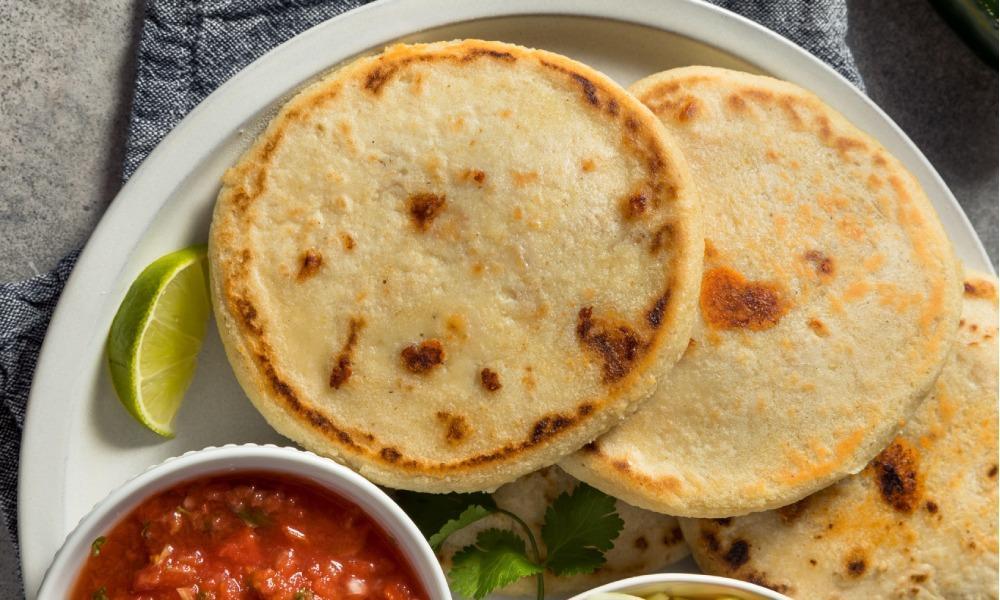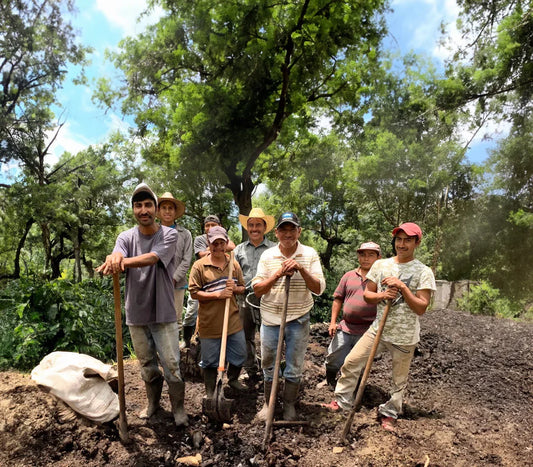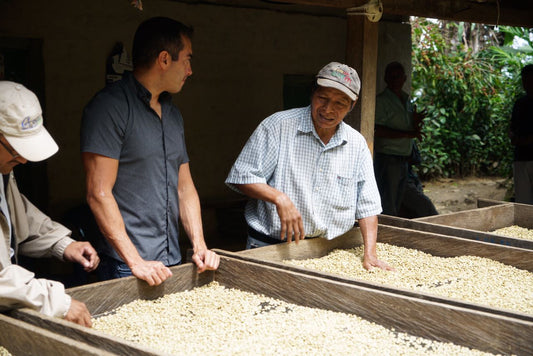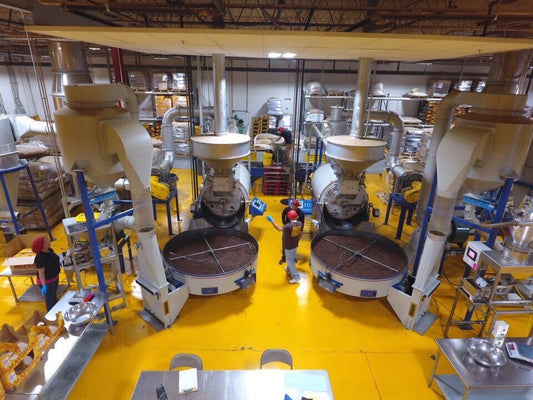
What Is a Pupusa? The Lowdown on El Salvador's Greatest Export
Chefs Aldo Rivera and Javier López reveal how a humble corn tortilla stuffed with cultural significance became El Salvador's national dish.
In the Mayan creation story, the gods made men from corn. Yep, that's right: according to the Mayas, we're all made up of little gold kernels of goodness.
The corn became humankind's blood and formed their heart. In a sense, this myth reveals a profound truth about the Latin American people because corn – a product native to South America – is an essential ingredient in most of our beloved dishes, from Chilean humitas in the south to Mexican tortillas in the north.
In El Salvador, corn is transformed into a fantastic dish known as a pupusa, a specialty from Central America where it’s consumed with fervor from dawn till dusk.
What Is a Pupusa?
Made with masa, pupusas are thick, spongy corn tortillas that can be stuffed with various fillings before being cooked on a clay comal or steel griddle.
Some popular fillings include beans and chicharrón and quesillo. Another popular filling is loroco blossoms – a fragrant plant native to South America that produces edible flowers with an earthy taste similar to artichokes.
To make a pupusa, Aldo Rivera, a Salvadoran chef and judge on the cooking show Top Chef, explains a person must “take a ball of dough, make a hole in it and stuff it with filling”.
Next, the pupusa is sealed and patted to distribute the filling evenly and attain the characteristic round shape. These are then served with tangy sides such as curtido and salsa roja.
Of course, it can also be accompanied with hot chocolate or coffee. Ubiquitous to Latin American countries, these drinks are sometimes even served free of charge with pupusas in El Salvador.

Where Do Pupusas Come From?
Although the exact origin of the pupusa is unclear, there is no denying that it has its roots in Latin America, sharing similarities with Mexican gorditas (although these are fried) and Colombian and Venezuelan arepas.
As Aldo explains, in historical records from the 16th century there are references to corn tortillas, mixed with meat and beans, prepared by local indigenous people. But, they did not have a particular name.
While research indicates that pupusas indeed have an indigenous origin, some believe that it is the result of interactions between native South Americans and European colonisers.
The origin of the word is also fiercely debated. Some believe it comes from the Kʼiche or Quiché people, a Mayan tribe. Others think it comes from the Nahuatl word ‘pupushawa’, which, roughly translated, means ‘swollen’.
However and wherever it originated, one thing is certain: it is quintessential Salvadoran cuisine. So much so that it was adopted as a national dish and even given an annual holiday in its honour – the second Sunday of November.
Raul Montalvo, a Salvadoran immigrant now living in the US, agrees wholeheartedly. In a BBC article, he described the power that pupusas continue to have over him:
“You can’t get any more Salvadoran than a pupusa. The peculiar smell, the combination of the hot pupusa topped with chilled curtido. For me, getting pupusas every so often is the closest form of being back home.”

Where Can You Find a Pupusa?
Today, pupusas are sold across the US, with pupuserías found in most Latino neighborhoods.
These pupuserías play a significant role in keeping Salvadoran traditions alive by passing on special skills.
The ability to form a traditionally round pupusa and keep it from opening during the cooking process is one such skill.
While the process may seem simple, novices often end up with “square” pupusas. For this reason, Javier López, a trained chef and now head of quality control at Odyssey Coffees in El Salvador, highlights the role of the pupuseras, the specialists in making pupusas.
“It is incredible what they do because it is pure practice and pure experience, not just anyone can make good pupusas, it is a very complicated art, and it is a reflection of the Salvadoran because pupusas require a lot of work,” Javier says.
But the pupusa also has a deep cultural significance. Pupusas are family meals, Sunday dinners, and, importantly, the taste of home.
Just as the indigenous people used corn tortillas to sustain themselves on their travels, many Salvadorans today seek refuge in pupusas when they are outside of El Salvador.
“It’s definitely a nostalgic food,” Aldo says. “When Salvadorans find themselves in another country, they want to eat food that makes them feel at home. The pupusa does that because it is part of our idiosyncrasy.”
Javier agrees, saying: “You could leave El Salvador with not a care in the world, but two weeks in you say ‘I'd like a pupusa!’”.
And just as in the Mayan myth in which men committed themselves to honour and worship the gods, Salvadorans honor corn by sharing pupusas with everyone.


